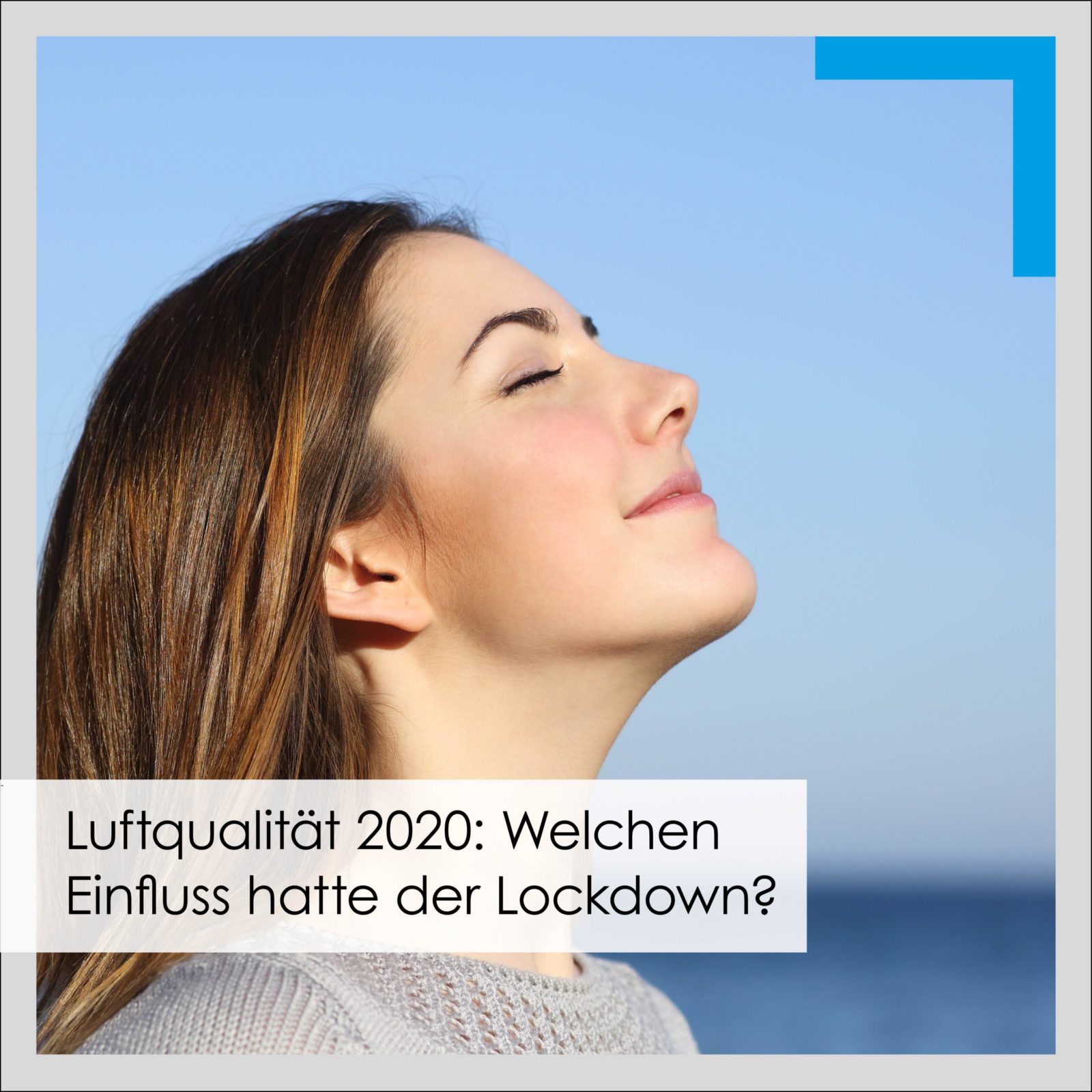The Federal Environment Agency's Air Quality Report 2020
In its background paper on air, the Federal Environment Agency presents the results of the preliminary evaluation of air quality in Germany in 2020. The evaluation is based on the data from the air monitoring networks of the federal states and the Federal Environment Agency as of 01 February 2021, which have not yet been finally verified. The final quality-assured results will then be available from mid-2021.
Air quality measurement
In Germany, air quality is monitored several times a day at more than 600 measuring points for the levels of the air pollutants fine particulate matter, measured as PM10- and PM2,5-fraction, nitrogen dioxide (NO2) and ozone (O3). In the publication, the measurement results are compared with the EU limit values and the significantly stricter WHO recommendations.
Causes of air pollution
The main causes of air pollution are road traffic and combustion processes in industry, the energy sector and households. In the case of fine dust pollution, the agriculturally induced formation of secondary particles through chemical reactions in the air also contributes to the pollution.
Factors influencing air quality
The weather also has a significant influence on the level of pollution. In cold weather, air pollution increases, e.g. due to increased heating, but also due to high-pressure weather conditions, in which a reduced air exchange can be observed. Summer high-pressure weather conditions, on the other hand, lead to increased ground-level ozone pollution due to intensive solar radiation and high temperatures.
High wind speeds and the resulting good mixing in the atmosphere lead to reduced pollutant loads. These different weather conditions lead to fluctuations in air pollution against the background of rather long-term emission developments.
Ambient conditions also have an influence on air quality. Here, a distinction is made between "rural" and "urban" as well as "urban traffic-related" backgrounds for the measuring points. Areas with a rural background represent air quality that is largely unaffected by local emissions. In the case of an urban background, the pollutant loads correspond to the typical air pollution in cities, resulting from emissions from the city itself (e.g. road traffic, heating, industry) and the large-scale background. The urban traffic-related area is typically located along heavily trafficked roads. This adds traffic emissions to the already existing urban background pollution.
Results of the evaluation
Fine dust (PM10 / PM2,5)
The EU limit value for fine dust is for the particle fraction < 10 µm (PM10) as an annual mean value at 40 µg/m³ for PM2,5-fraction at 25 µg/m³. In 2020, as in the previous years since 2000, these limit values were undercut in all areas under consideration.
Taking into account the significantly stricter WHO recommendations, it can be noted that the annual mean value for PM10-fraction (20 µg/m³) has only been undercut for urban areas close to traffic since 2019, while these recommendations have been complied with for rural and urban areas since 2004 and 2012, respectively.
For the PM2,5-fraction, the WHO recommendation is an annual average of 10 µ/m³. This value was complied with for all three rooms in 2020, but was higher in previous years, with the exception of the rural areas.
In general, there is a continuous decrease in dust pollution.
Nitrogen dioxide
For nitrogen dioxide, both the EU limit value and the WHO recommendation for the annual mean are 40 µg/m³. For 2020, the UBA has provisionally determined at around 400 measuring stations that exceedances of the limit value were only detected at 2 % of the traffic-related stations. In general, however, an undercutting of the limit value has been detectable for the last 5 years even in the areas close to traffic. In the rural area without significant traffic influences, the values were at a level of 10 µg/m³.
Ground level ozone
Ozone is measured as a 1-hour average at approx. 260 stations in Germany. There is an information threshold of 180 µg/m³ for ozone, the alarm threshold is set at 240 µg/m³ as a 1-hour average in each case. The highest measured value in 2020 was 235 µg/m³ and thus significantly below the previous year's maximum of 314 µg/m³. Currently, the target value for the protection of human health is 120 µg/m³ as an 8-hour average, which may occur on a maximum of 25 days in a 3-year average. In the long term, this value should no longer be exceeded. The recommendations of the WHO envisage an undercut of 100 µg/m³ as an 8-hour average.
In the 3-year average, the target value of 120 µg/m³ as an 8-hour average was exceeded in rural areas at more than 65 % of the monitoring sites in urban areas only at about 40 % of the monitoring sites.
Air quality during the 2020 Spring Lockdown
The main factors influencing air quality are traffic and production. Due to COVID 19 and the associated measures to contain the pandemic, the greatest restrictions were recorded in weeks 13 to 16. As a result, the traffic figures in the different regions of Germany were reduced by between 20 and 50 percent.
For nitrogen dioxide pollution, traffic is a significant influencing factor along with energy production, but for particulate matter it accounts for a much smaller share of the pollution.
Contrary to expectations, at first glance there was no corresponding decrease in the daily mean nitrogen oxide measurements during the observation period. However, a closer look revealed a changed distribution over the day with high loads in the morning and evening, but low in the afternoon.
In addition to the technical influencing variables, the paper also examines the meteorological influences. After the "weather adjustment" by various institutes such as the German Weather Service (DWD), it was found that the lockdown-related restrictions in spring 2020 lead to temporary, average reductions in NO2-load by 20 to 30 per cent. However, this effect was only detectable for the comparatively short period of about four weeks. For the limit values to be considered as NO2-However, this had no significant influence on the annual mean values.
Conclusion
In conclusion, the measures taken in spring 2020 to contain the Corona pandemic had a fundamentally positive effect on air quality. The NO2-concentrations decreased during the lockdown period, but the decline was slowed by unfavourable dispersion conditions. Weather-adjusted mean decreases in the range of 20-30 per cent were determined. Due to the short period of about four weeks, the influence on the annual mean values and thus on the long-term exposure to NO2 but low.
Link to the website of the Federal Environment Agency: UBA Report Air Quality 2020
#mullandpartners #engineeringforabettertomorrow #news #airquality #covid19 1TP5Environmental Agency
Business areas
Environmental and geotechnical engineering
Construction and project management
Renewable energies
Real estate development
Infrastructure
Water management
Societies
M&P Engineering Company
M&P Engineering Company Munich
T&P Beratende Ingenieure
P&P Real Estate Consulting
P&B Real Estate Management
P&M Project Management
M&P Umwelttechnik
Contact

